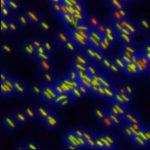Link to Pubmed [PMID] – 20629622
Curr. Med. Chem. 2010;17(27):3099-108
Tuberculosis is still a leading cause of death in developing countries and a resurgent disease in developed countries. The selection and soaring spread of Mycobacterium tuberculosis multidrug-resistant (MDR-TB) and extensively drug-resistant strains (XDR-TB) is a severe public health problem. Currently, there is an urgent need of new drugs for tuberculosis treatment, with novel mechanisms of action and, moreover, the necessity to identify new drug targets. Several enzymes involved in various metabolic processes have been described as potential targets for the development of new drugs. Recently, two different classes of most promising drugs, the benzothiazinones (BTZ) and the dinitrobenzamide derivatives (DNB), have been found to be highly active against M. tuberculosis, including XDR-TB strains. Interestingly, both drugs have the same target: the heteromeric decaprenylphosphoryl-β-D-ribose 2′-epimerase encoded by dprE1 (Rv3790) and dprE2 (Rv3791) genes, respectively. DprE1 and DprE2 are involved in the biosynthesis of D-arabinose and, in particular, they are essential to perform the transformation of decaprenylphosphoryl-D-ribose to decaprenylphosphoryl-D-arabinose, which is a substrate for arabinosyltransferases in the synthesis of the cell-envelope arabinogalactan and liporabinomannan polysaccharides of mycobacteria. Arabinogalactan is a fundamental component of the mycobacterial cell wall, which covalently binds the outer layer of mycolic acids to peptidoglycan. The heteromeric decaprenylphosphoryl-β-D-ribose 2′-epimerase thus represents a valid vulnerable antimycobacterial drug target which could result in “magic” for tuberculosis treatment.

